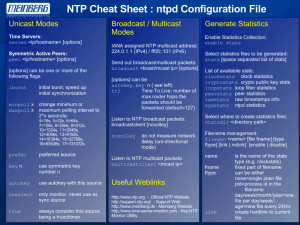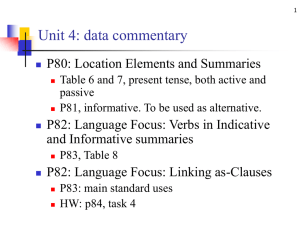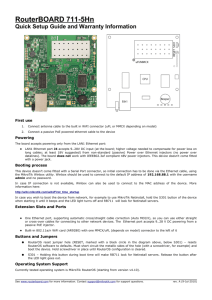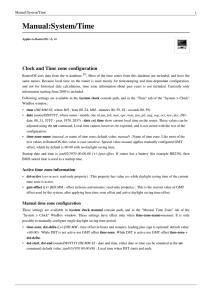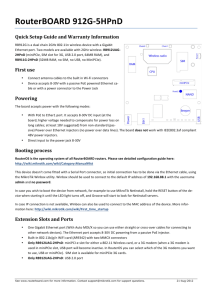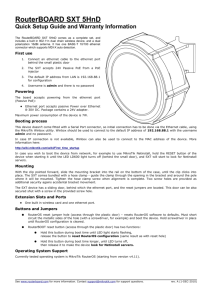RouterOS v5 wireless features - MUM
advertisement
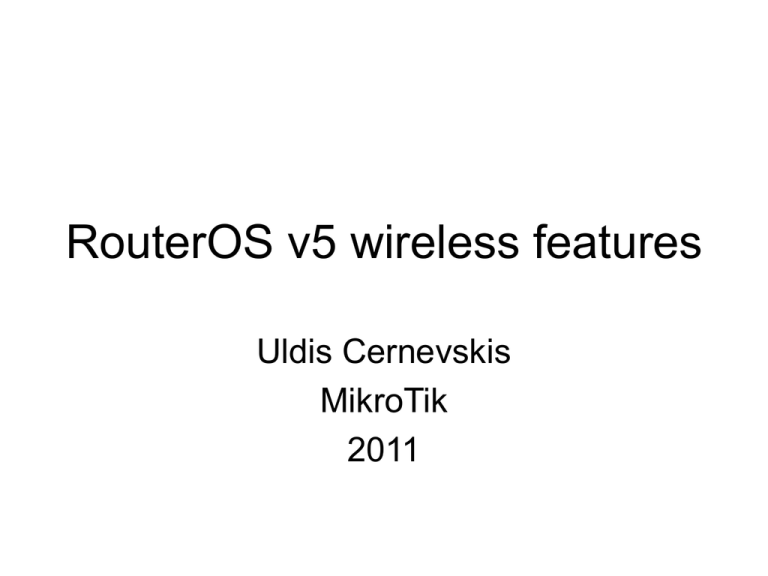
RouterOS v5 wireless features Uldis Cernevskis MikroTik 2011 Station-bridge feature • This mode provides support for transparent protocol-independent L2 bridging on station device • This mode is MikroTik proprietary and can't be used to connect other brand devices • RouterOS accepts clients with "station-bridge" mode if "bridge-mode" parameter is enabled in the AP settings • RouterOS v5.0rc11 or newer needed on AP and Station Wireless station modes application matrix 802.11 Station V Station-wds ROS 802.11 Nstreme V V V V V V Station-pseudobridge V V V Station-pseudobridge-clone V V V V V Station-bridge Nv2 V Wireless-protocol setting Value AP Client unspecified establish nstreme or 802.11 network based on old nstreme setting connect to nstreme or 802.11 network based on old nstreme setting any same as unspecified scan for all matching networks, no matter what protocol, connect using protocol of chosen network 802.11 establish 802.11 network connect to 802.11 networks only nstreme establish Nstreme network connect to Nstreme networks only nv2 establish Nv2 network connect to Nv2 networks only nv2nstreme802.11 establish Nv2 network scan for Nv2 networks, if suitable network found connect, otherwise scan for Nstreme networks, if suitable network found - connect, otherwise scan for 802.11 network and if suitable network found connect nv2-nstreme establish Nv2 network scan for Nv2 networks, if suitable network found connect, otherwise scan for Nstreme networks and if suitable network found - connect Signal reading for each chain • “signal-strength” - combination of all active chains on the control and extension channels • "signal-strenght-ch0" - chain 0 control channel • "signal-strenght-ch1" - chain 1 control channel • "signal-strenght-ch2" - chain 2 control channel • No separate signal readings for extension channel • Tx chains signal readings currently available only for Nv2 Frequency-offset feature • Frequency-offset feature is designed for easier frequency selection on wireless cards with builtin frequency converter Antenna-mode selection for RB751U and RB751G • RB 751U and RB751G has 3 built-in wireless antennas – Chain0: • one antenna for TX • one antenna for RX – Chain1: • one antenna for TX/RX • external antenna connected to MMCX connector • Note that enabling the external antenna disables the Chain1 built-in antenna Antenna-mode selection for RB751U and RB751G Spectral Scan/History • Uses RouterOS • Uses Atheros Merlin 802.11n chipset wireless cards • Frequency span depending on card: – 5ghz: 4790-6085mhz – 2ghz: 2182-2549mhz • Scan with 10mhz frequency increments for improved data quality • Audio monitor Spectral Scan using the Dude LED feature • Wireless signal LEDs supported added for RB400 series, RB711, RB SXT and RB Groove: – 1 LED - on, if wireless client is connected to AP (usually >= -89dBm) – 2 LEDs - on, if signal strength >= -82dBm – 3 LEDs - on, if signal strength >= -75dBm – 4 LEDs - on, if signal strength >= -68dBm – 5 LEDs - on, if signal strength >= -61dBm Wireless LEDs on RB SXT and RB Groove Nv2 Protocol • Proprietary wireless protocol developed by MikroTik • Based on TDMA (Time Division Multiple Access) media access technology • Works on Atheros chipset cards: – AR5413 and newer chipset cards (R52) – N chipset cards (R52n,R52Hn) • Supported from RouterOS v5 Nv2 TCP routing both direction AR9380 chipset support

